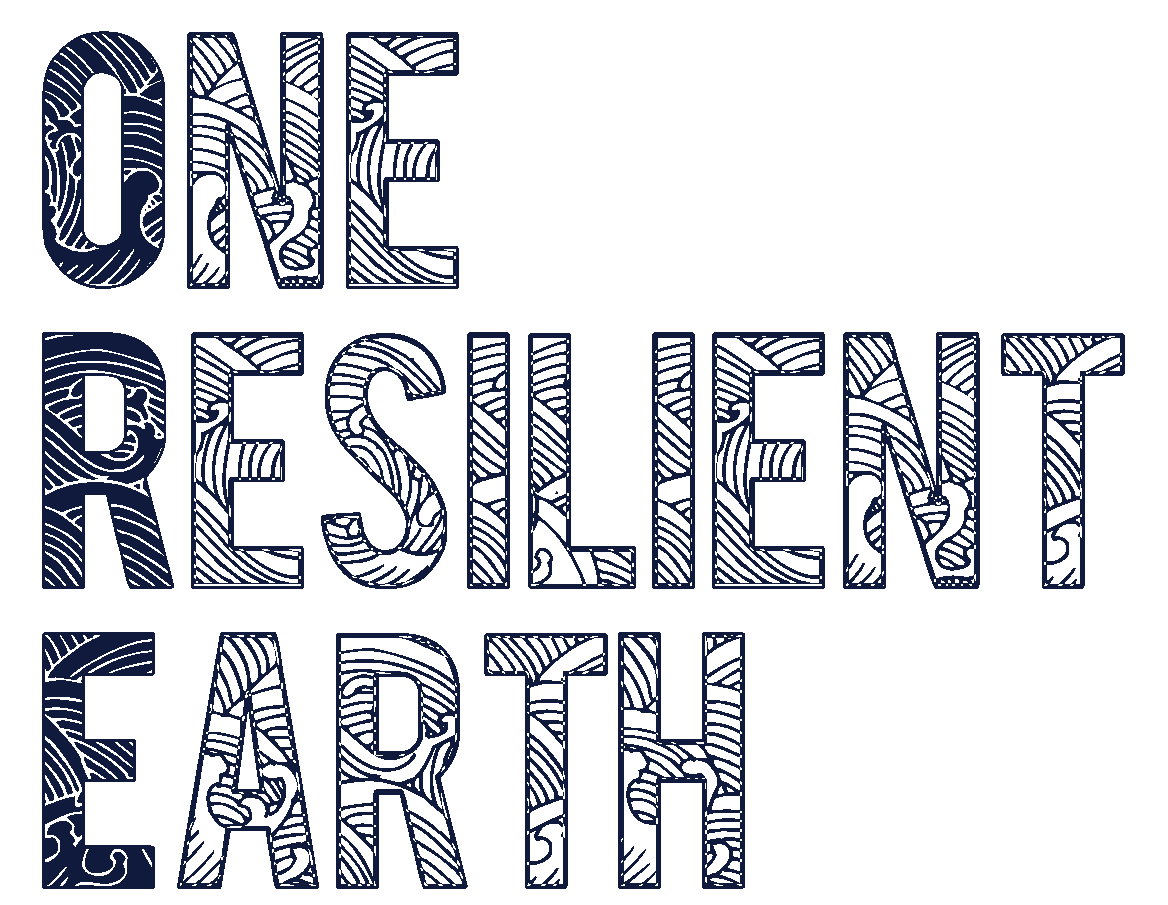The Infinite Mosaic Galleries assemble fragments of the worlds we live in today, treasured by visual artists from around the globe, so that we take a moment to appreciate the fleeting beauty around us, and experience the vulnerability of all things human.
“CARIBOU RIBS SEPARATING FROM THE CAGE IS THE SAME SOUND AS TUNDRA CRANBERRIES SEPARATING FROM THE VINE. WHEN YOU ARE OPEN TO THE LAND IT SPEAKS TO YOU.” – MAUREEN GRUBEN

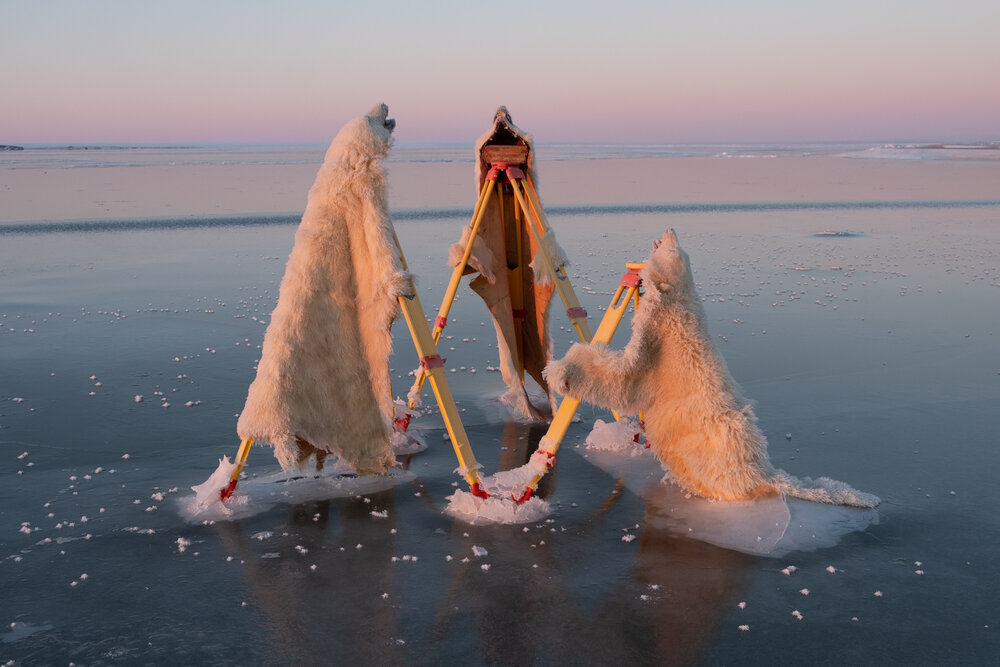
Aidainnaqduanni (Inuvialuktun for ‘We are finally home’) employs three deteriorating polar bear rugs that were gifted to the artist by the Museum Of Anthropology at the University of British Columbia to be used in her practice. They have been paired with vivid yellow survey tripods found in Tuktoyaktuk among the varied detritus that was abandoned when large-scale arctic oil drilling projects of the 70s and 80s ceased operations. The assemblage was installed on the ice outside the artist’s coastal home in Tuktoyaktuk as the ocean grew still during the 2020 freeze up—an act that, in essence, returned the bears to their home environment. Gradual changes took place during the week-long installation: thick frost coated the bears’ fur while ice accumulated and cracked around them, shifting their positions on the tripods such that their faces tilted up towards the sky.
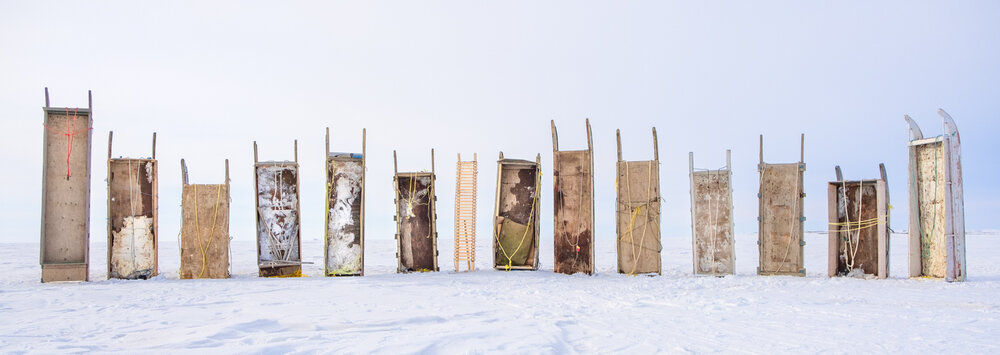
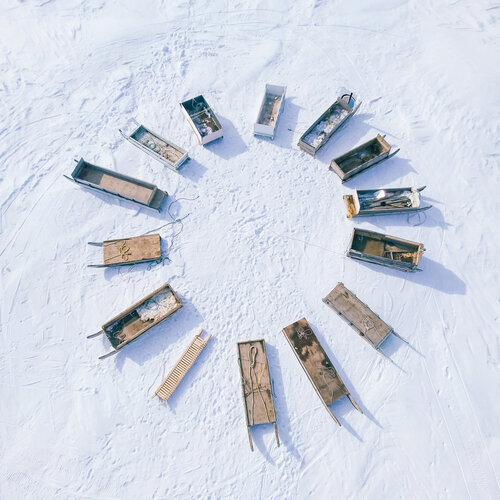
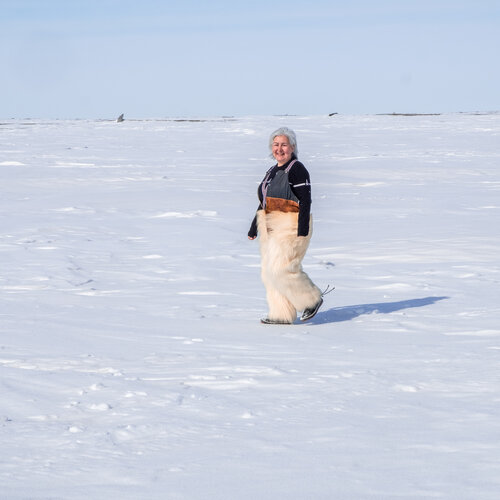
Every April, community members from Maureen Gruben’s hometown of Tuktoyatuk expertly pack family sleds with everything they need to live on the land, and hitch them to skidoos. They cross miles of frozen tundra to gather at Husky Lakes where they set up their canvas tents and off-grid cabins for the spring ice fishing season. For Moving with joy across the ice while my face turns brown from the sun, Gruben borrowed fourteen local hand-built sleds and brought them together into a short-duration land art installation that has been photographically documented. Each sled is intimately connected to a family that has created, used, and maintained it over years. Engaging with objects built for traversing this specific landscape creates an intrinsic connection to the erosion of this land, and the melting of the ice on which people and animals have lived and hunted for thousands of years.
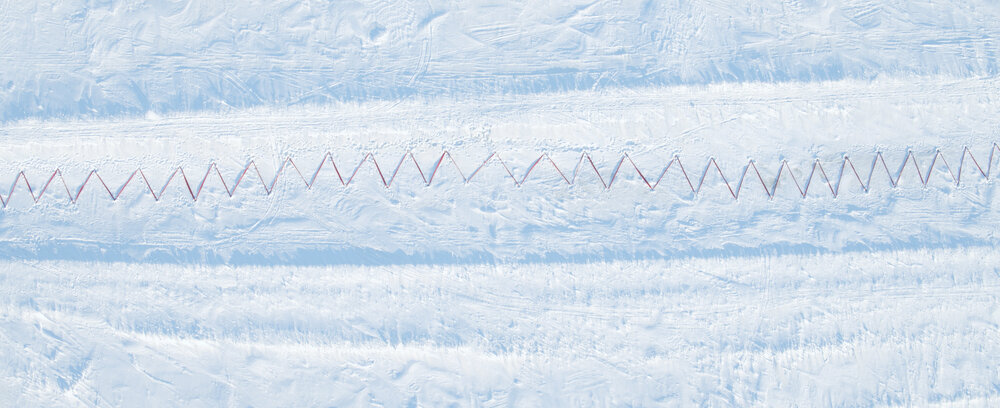
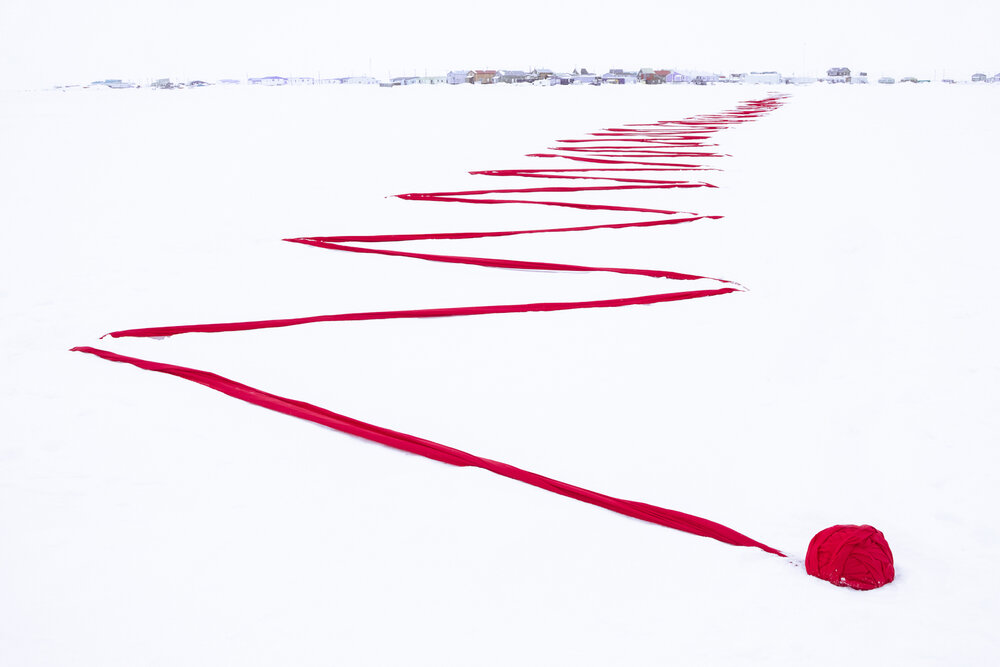
Consisting of 111 ice holes connected with red broadcloth, Stitching My Landscape extends for nearly a thousand feet. It was installed April 23rd, 2017 on an expanse of the frozen ocean surrounding Ibyuq Pingo. The artist’s solo, performative process of rolling the cloth from hole to hole was an act of endurance and of careful devotion. The core visual elements of red material stretched across ice are embedded in a recollection Gruben has of her brother harvesting seal—during the processing a long, red string of fresh gut was stretched out taught against the white snow. The work simultaneously evokes suggestions of traditional clothing and means of subsistence; the strength of family and community; and the potential for healing, and for being healed by, the land. Commissioned by Partners In Art for LandMarks2017/Repères2017. Curated by Tania Willard.
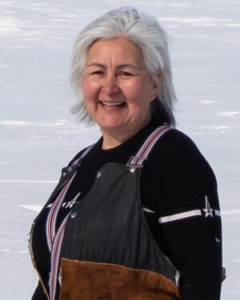
Inuvialuk artist Maureen Gruben employs an intimate materiality as she disassembles and re-combines disparate organic and industrial elements. Polar bear fur, beluga intestines, seal skins and gathered kelp encounter resins, vinyl, bubble wrap and metallic tape, forging critical links between life in the Western Arctic and global environmental and cultural concerns.
Website: https://www.maureengruben.com/
We are very grateful to Julie Decker and Francesca DuBrock of the Anchorage Museum who connected us with fantastic women artists and inspired us with the exhibition Extra Tough: Women of the North, among the other great projects they are undertaking.
